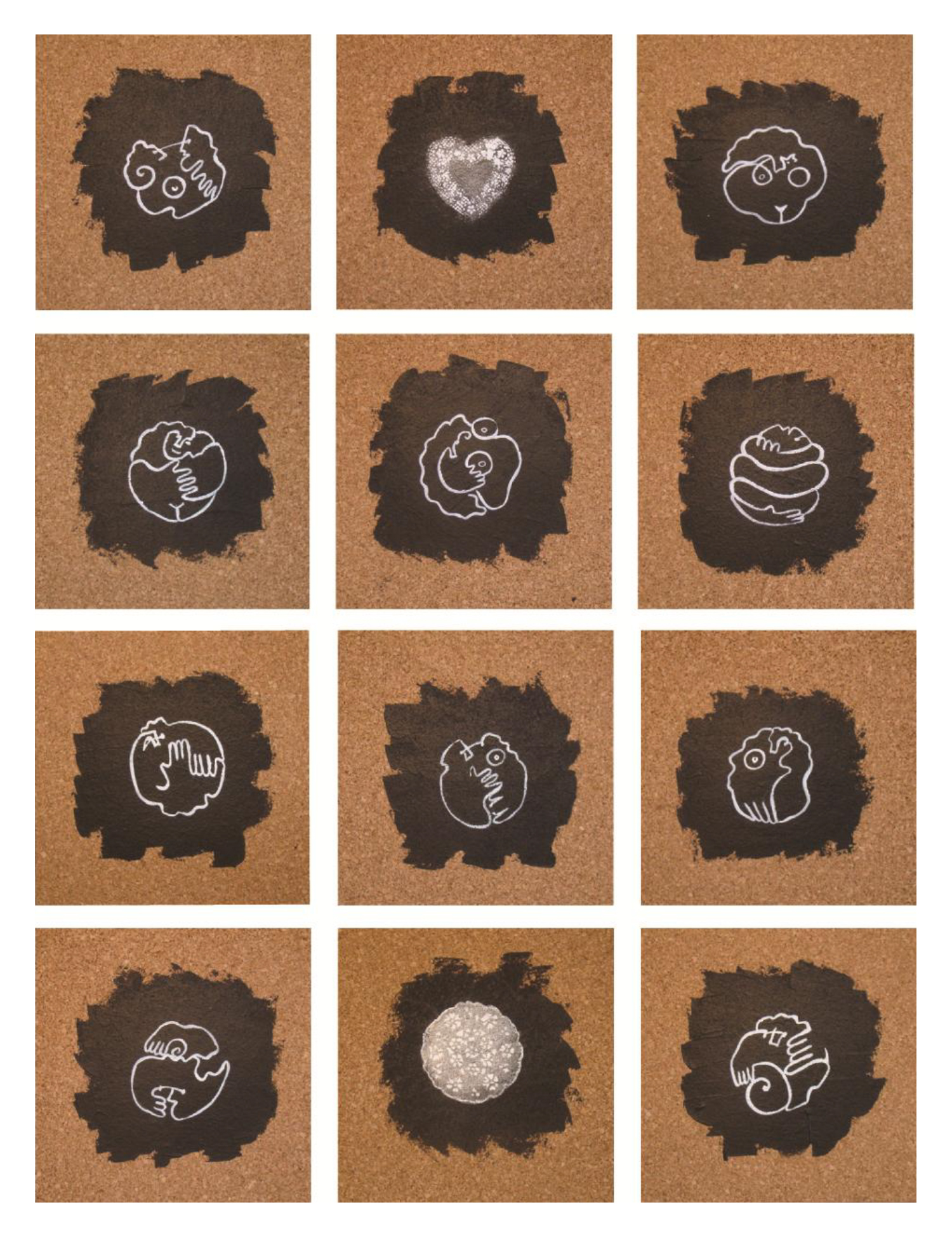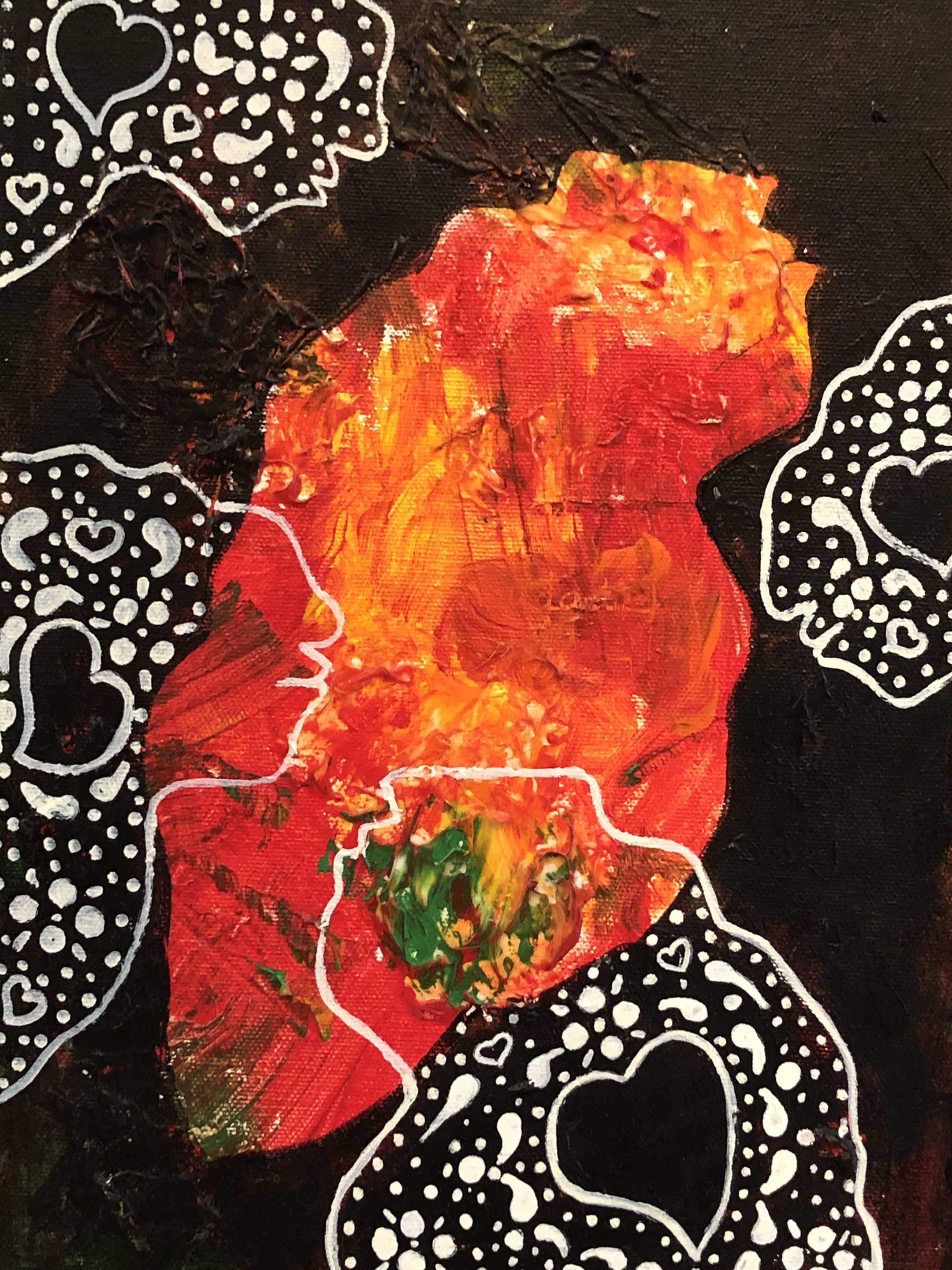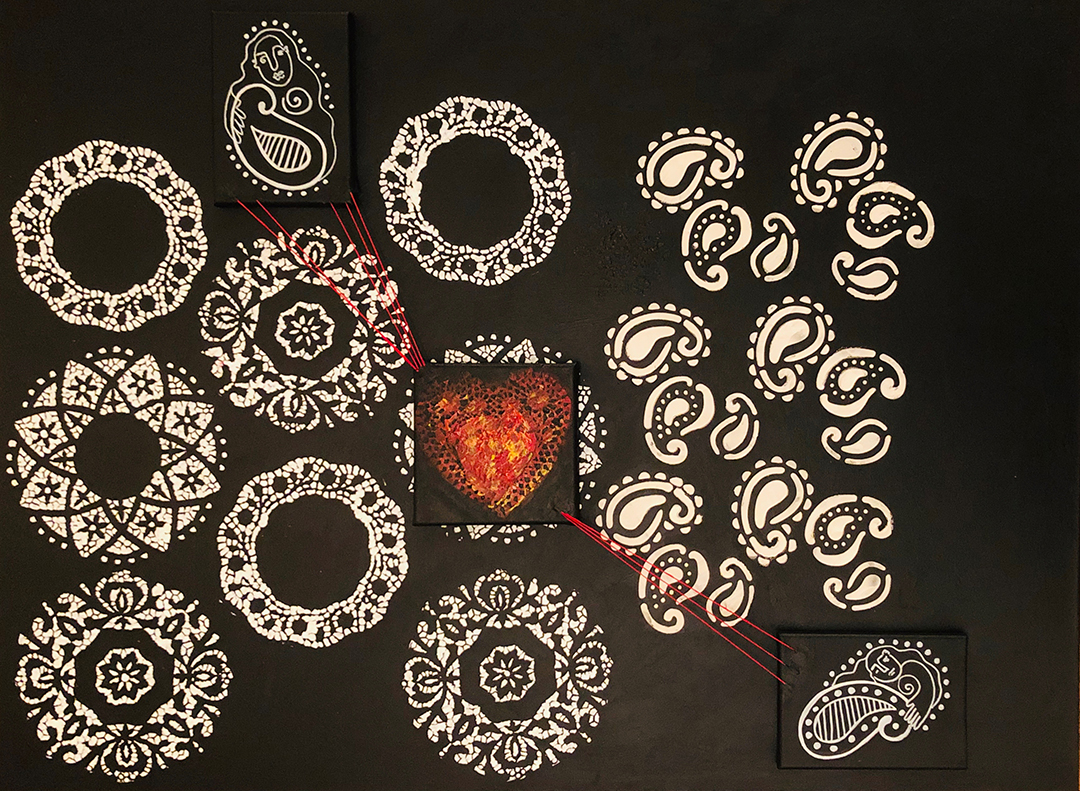Leonor Alvim Brazão
Virginia
Leonor Alvim Brazão was born in Lisbon, Portugal, but spent her youth in Brazil, where she studied visual arts, music and dance. She obtained a degree in Visual Communication from the Mackenzie University and a postgraduate degree in Arts Education from the Centro Universitário Claretiano. Upon her return to Lisbon, Leonor began a career in advertising where she worked for several advertising agencies.
Currently she lives in the US, where she works and exhibits her artwork regularly. She is a visual artist, graphic designer, poet and educator, and she is a director of an art education company where she inspires children and adults worldwide with her creativity.
Contact: leonoralvim@comcast.net
Website: www.brazao.com
Instagram: @leonor_alvim_brazao


Mandala III
Fazes a renda de manhã
E fazes a renda ao serão
Senão fazes senão renda,
Que fazes do coração?
by Fernando Pessoa
Our heart is where we were born, where we find our origin, our roots. After being exposed to three different cultures, three nationalities, the search for my identity is constant in my life. That search is illustrated in a series of artworks inspired by the Portuguese culture.
I search within my memories for feelings, emotions and symbols that express my essence.
Those symbols are inspired by filigree, fisherman nets, roosters from Barcelos, textures from laces, embroidery and architectural elements that are repeated and transformed in mandalas that come from a sacred space.
I search within my memories for feelings, emotions and symbols that express my essence.
Those symbols are inspired by filigree, fisherman nets, roosters from Barcelos, textures from laces, embroidery and architectural elements that are repeated and transformed in mandalas that come from a sacred space.
 Cork Patchwork
Cork Patchwork 
Mandala I
 Mandala IV
Mandala IV
 Metamorphosis I
Metamorphosis I
 Metamorphosis II
Metamorphosis II
 Metamorphosis III
Metamorphosis III
The Minimalist style and the use of a continuous drawing line reveal the search of simplicity in my journey but without losing its complexity. The presence of feminine elements is constant in my work, a symbol of the women’s role on the teaching of traditions to new generations.
The predominance of the color black is the color of Fado the sound of the Portuguese soul. It is the color of sorrow and grief from people who wait for what is not coming back. It’s also the color of the academic “tunas”, the color of the peasant vests, as well as the color of the night and elegance.
In the end, I am just a story teller; I tell my story as well as the story of the people who cross my path who have shaped my imagination.

